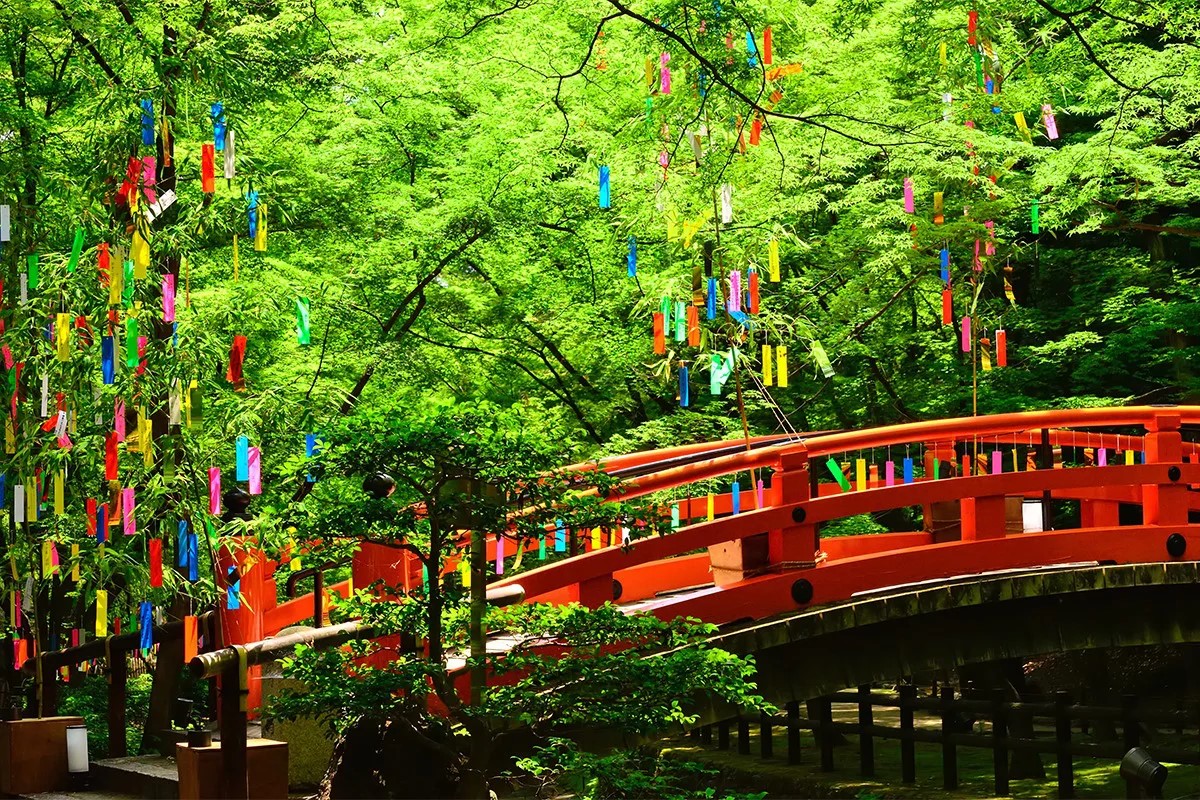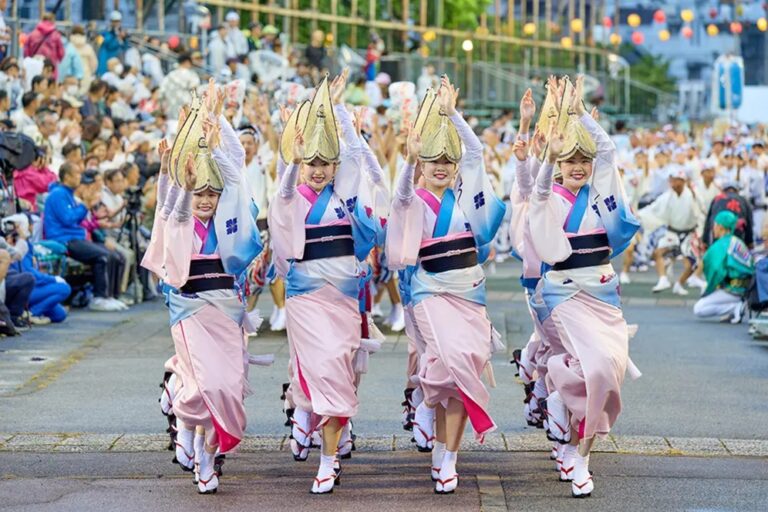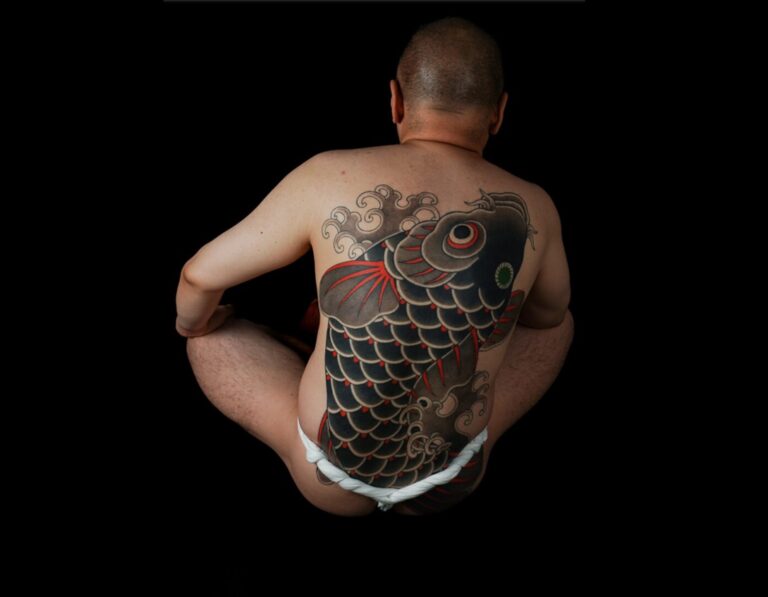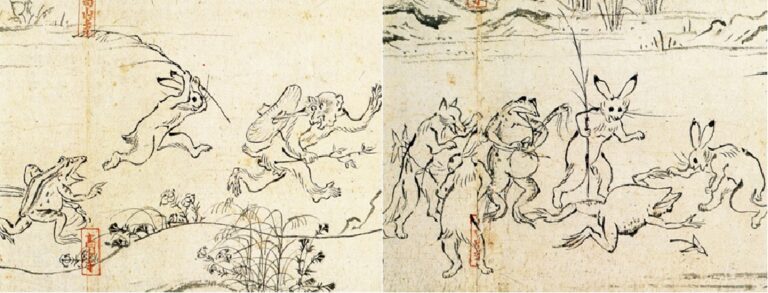“What Is Tanabata? The Japanese Star Festival You Need to Know About”
Origins of Tanabata and Its Spread in Japan
Tanabata, celebrated every year on July 7th, is a traditional Japanese event where people write wishes on colorful paper strips and hang them on bamboo branches. It originated from the Chinese festival Qixi (乞巧奠) festival, introduced to Japan during the Nara period (8th century) as an imperial court ritual.


By the 10th century, it became common to compose wishes in the form of waka poems and write them on kajinoha (paper mulberry leaves) while gazing at the stars. Around the 18th century, the practice spread among the general public, and the mulberry leaves were gradually replaced with paper tanzaku and hung on bamboo.
The festival’s date varies due to differences between the modern solar calendar (new calendar) and the traditional lunar calendar (old calendar). While Tanabata is officially celebrated on July 7th according to the new calendar, some regions still observe it in August following the old lunar calendar. Cities like Sendai and Hiratsuka hold their big festivals in early August, when the skies are clearer, allowing star-crossed lovers a better chance to meet under the stars.
💡Tips💡 Tanabata Around the World
Tanabata is not only celebrated in Japan—it’s one of the traditional festivals enjoyed across Asia and beyond. However, the way it’s celebrated can vary slightly depending on the country.
- In China, the original festival involved offering traditional wheat-based sweets, fruits, and flowers while praying for improved skills in crafts and needlework. Today, it has evolved into something like a second Valentine’s Dayn China. where men give gifts to women and couples enjoy romantic dates, inspired by the legend of the Cowherd and the Weaver Girl.
- In Korea and Taiwan, it’s customary for couples to exchange gifts. In Taiwan, some regions celebrate this day as the birthday of the Weaver Girl, and even hold coming-of-age ceremonies.
The Legend of Orihime and Hikoboshi
Orihime, represented by Vega (the brightest star in the Lyra constellation), is the daughter of the Sky King and a skilled weaver. Hikoboshi, represented by Altair (in the Aquila constellation), is a diligent cowherd.

Impressed by their hard work, the Sky King allowed them to marry. However, after their wedding, the couple became so absorbed in each other that Orihime stopped weaving and Hikoboshi neglected his cows. Angered by this, the Sky King separated them across the Milky Way and permitted them to meet only once a year—on the night of July 7th.
If it rains that night, the Milky Way appears swollen and they cannot cross. This rain is called sairui-u (“tears rain”)—said to be their sorrowful tears.
Making a Wish Upon the Stars: Tanabata Decorations
During Tanabata, it’s traditional to write your wishes on colorful strips of paper and hang them on bamboo branches. Wishes often include things like “I hope my dream comes true” or “I want to date my crush,” written with heartfelt hopes and dreams.

Tanzaku (wish strips) made of traditional washi paper or origami paper are tied to bamboo using koyori—twisted paper strings. Handcrafted decorations like paper balloons, stars, and ornamental balls (kusudama) made of origami are also part of the fun.
While large city festivals may feature extravagant decorations made from plastic or other materials, homemade Tanabata displays often use natural and traditional materials, making them surprisingly sustainable.
Common Tanabata Decorations
- Tanzaku (wish strips): These come in five colors—blue (growth), red (gratitude), yellow (trust), white (rules and obligations), and black/purple (wisdom)—each representing a different type of wish.
- Fukinagashi (streamers): Colorful streamers attached to paper balls, symbolizing the threads woven by Orihime (the weaving princess). They represent wishes for improved sewing and crafting skills.
- Senbazuru (a thousand cranes): Origami cranes symbolizing long life, often hung with wishes for health and family safety.
- Kinchaku (money pouches): Small origami purses or pouches hung as charms for financial luck and business prosperity.
- Nawakazari(Net decorations): represent a net for catching fish, and are imbued with the wish for a good harvest and a large catch.
- Kamigoromo: It is believed that displaying a paper doll (kimono) will improve your sewing skills and you will never have to worry about having clothes to wear. It also seems to have the meaning of “having the doll take care of your misfortune.”
- Kuzukago(Wastebasket): To symbolize “not wasting things,” paper scraps produced when making Tanabata decorations are placed in a basket made from origami paper and hung from a bamboo tree.
Funny & Unique Tanzaku Wishes
Around Tanabata season, social media in Japan is filled with quirky and heartfelt wishes found on tanzaku.




A ghostwritten note on a tanzaku in a music studio?


Posted by Google’s official account: “I hope Orihime and Hikoboshi can meet using Google Maps.”
Japan’s Three Major Tanabata Festivals
While some people celebrate Tanabata at home by decorating bamboo branches with colorful paper strips, the festival spirit often extends far beyond the household. Across Japan, you’ll find vibrant Tanabata decorations in shopping streets and arcades, where communities come together to hang massive streamers, paper crafts, and lanterns. These public displays turn entire neighborhoods into dazzling star-themed wonderlands.
Among these, three cities are especially famous for their grand-scale Tanabata festivals:
Sendai Tanabata Festival (Miyagi)

Held every year from August 6th to 8th, the Sendai Tanabata Festival is Japan’s most famous Tanabata celebration. The city is adorned with enormous paper streamers (fukinagashi) that can reach several meters in length, hanging from shopping arcades and city streets. These decorations, made with traditional washi paper, are handcrafted by local businesses and schools and judged for artistry. Despite being held a month after July 7 due to the traditional lunisolar calendar, it draws over 2 million visitors annually. Food stalls, live music, and fireworks on August 5 kick off the festivities.
Official site: Sendai Tanabata Festival
📍Tip: Take the time to walk under the massive fukinagashi and look up—you’ll feel like you’re inside a galaxy of wishes.
Shonan Hiratsuka Tanabata Festival (Kanagawa)

Located just an hour from Tokyo, the Hiratsuka Tanabata Festival is held in early July, closer to the traditional Tanabata date. Known for its flashy and colorful decorations, it has a more modern and commercial feel, featuring pop culture characters, LED-lit floats, and parades. It’s perfect for families with kids or those who enjoy a bit of festival chaos. The main shopping street becomes a vibrant tunnel of paper and lights, and the festive mood spills over into the night.
Official info: Hiratsuka Tourism – Shonan Hiratsuka Tanabata
📍Fun fact: Hiratsuka started its Tanabata festival after WWII, inspired by Sendai’s, but gave it a unique local flavor—now it’s one of Japan’s top three.
Ichinomiya Tanabata Festival (Aichi)

Held in late July, Ichinomiya’s version mixes traditional and contemporary elements. Located near the historic Masumida Shrine (closely tied to the region’s cultural heritage), this festival features processions, dance performances, and locals in yukata. The streets are lined with colorful streamers and hand-crafted ornaments, and visitors can enjoy a slightly more relaxed, community-based vibe compared to Sendai or Hiratsuka. It’s especially popular among locals and those who prefer a less touristy, but still atmospheric celebration.
Official city page: Ichinomiya Textile Thanksgiving Tanabata
📍Highlight: The festival’s historical connection to the Owari region gives it an added layer of meaning—it’s not just pretty decorations, it’s cultural pride in action.
How Often Does It Actually Clear Up on July 7?
July is Japan’s rainy season, and stars aren’t always easy to spot on Tanabata night. According to the Japan Meteorological Agency, the average sunshine duration in Tokyo on July 7 is about 4.4 hours, based on daily data from 1991 to 2020.That’s out of approximately 14 hours of daylight—meaning many nights are partly cloudy or rainy. So, while we all hope for a clear sky, clear conditions can’t be guaranteed every year.
The Secret Behind Teru Teru Bozu
The teru teru bozu is a traditional Japanese charm made from cloth or tissue, often hung outside windows to wish for sunny weather. As Tanabata approaches, children hang them under the eaves in hopes of clear skies—so that Orihime and Hikoboshi can meet across the Milky Way on the night of July 7.

In some regions, people even hang the dolls upside down to wish for rain, especially during droughts. The timing of when you draw its face, and how, is thought to influence the weather—leading to many playful variations among children.
Wrapping It Up with a Touch of Romance
Two lovers who can meet just once a year. Even when separated by distance, their hearts remain connected—like stars shining across the night sky.
No matter where you are in the world, the Milky Way above Japan stretches across your sky too.
So this Tanabata, why not take a moment, write down a wish, and look up?
Which festival will you go to next?
☛Check out other festivals

Editor and writer from Japan. Not the best at English, but I share real stories with heart and honesty — aiming to connect cultures and ideas that matter.







